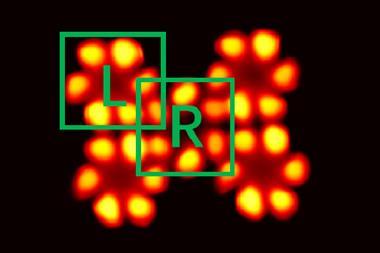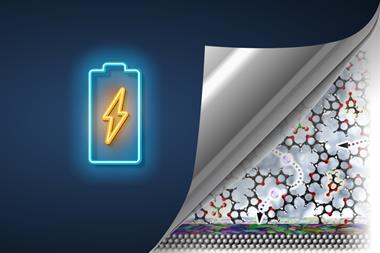Scientists in South Korea have devised a machine-learning model that can predict the chemical reactivity of organic materials. The model can screen for stability and compatibility across a wide stretch of chemical space, and the team demonstrated its efficacy by using it to select stable electrolytes for a lithium–oxygen battery.
Chemical reactivity predictions typically rely on theoretical methods that use direct calculations of activation barriers, or reaction kinetics estimates based on a material’s electronic properties (electronegativity, ionisation energy, electron affinity and hardness or softness). ‘We realised that these methods fail to find the relationship between electronic properties and the reactivity in a large chemical space,’ notes Kisuk Kang, who led the project at Seoul National University. ‘We decided to exploit machine-learning methods to find this complicated relationship.’ Methods based on calculating activation energies also have high computational costs, which renders them unsuitable for screening vast swathes of data.
Now, Kang and colleagues Byungju Lee and Jaekyun Yoo, have built upon previous work by considering molecular structure (functional groups and steric hindrance) alongside electronic properties. Multiple inputs allowed them to improve the prediction performance compared to previous linear regression models and reduce the prediction error. ‘Reactivity prediction is conventionally attempted by presuming descriptors that correlate with an expected reaction mechanism, such as electronegativities or ionisation energies’, comments Alexander Urban, whose research group investigates materials for electrochemical energy storage and conversion at Columbia University, US. ‘A strength of this model is that it does not rely on such chemical intuition. The features that enter the neural network model systematically encode both electronic and structural properties of the molecules.’
Kang’s group used lithium–oxygen batteries as a model system to test their machine-learning method. Their investigations focused on side reactions occurring between the redox mediators and electrolyte within the batteries, as these reactions can permanently degrade electrochemical systems. For example, the machine-learning model successfully demonstrated that the charged redox mediator 5,10-dimethylphenazine (DMPZ+) is stable against the electrolyte tetraethylene glycol dimethyl ether, which agrees with experimental results. They also created a reactivity map plotting 93 solvents against redox mediator materials.
The model will help users eliminate highly reactive materials prior to experiments. ‘This type of model could be useful as a screening tool to select electrolyte components that have a better chance of having long-term stability in a device’, concludes Rebecca Gieseking, who develops computational models to understand materials for emerging energy technologies at Brandeis University in the US. ‘For now, the model only considers reactions taking place within the electrolyte and ignores effects of the electrodes as either catalysts or reactive species. I’m looking forward to seeing if the researchers are able to extend their model to explicitly consider the electrode as well.’
References
This article is open access
B Lee, J Yooa and K Kang, Chem. Sci., 2020, DOI: 10.1039/d0sc01328e












No comments yet